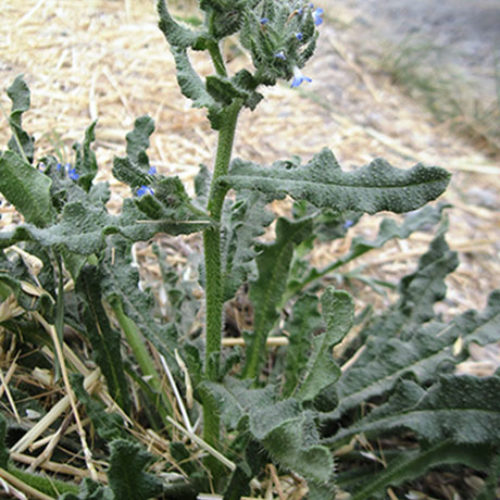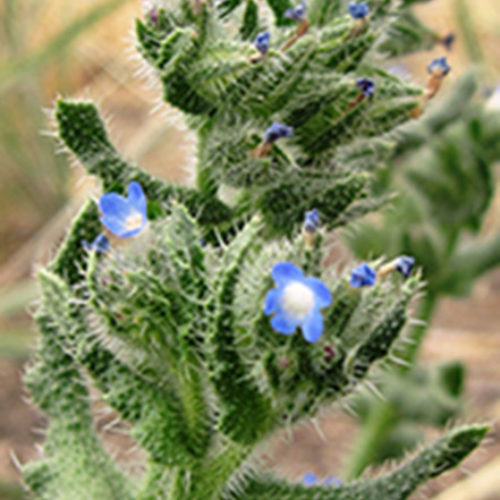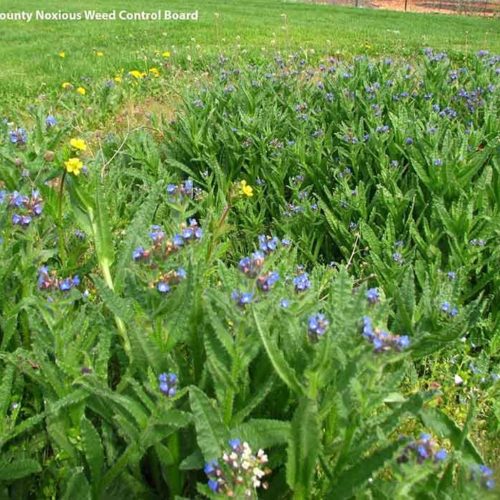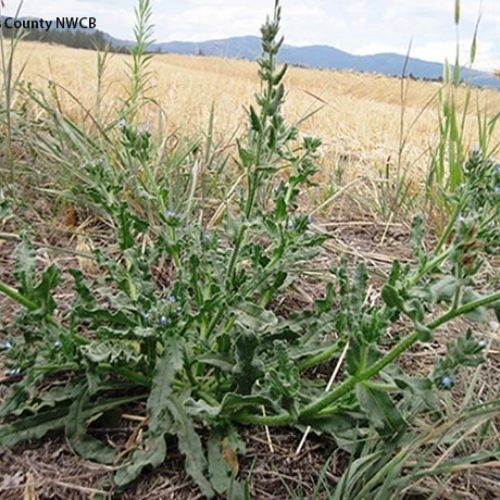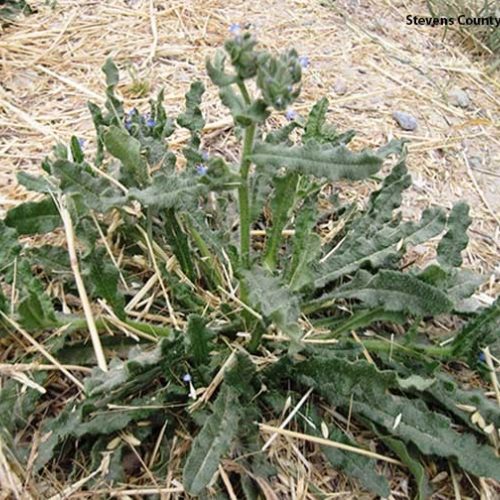Annual Bugloss
Lycopsis arvensis
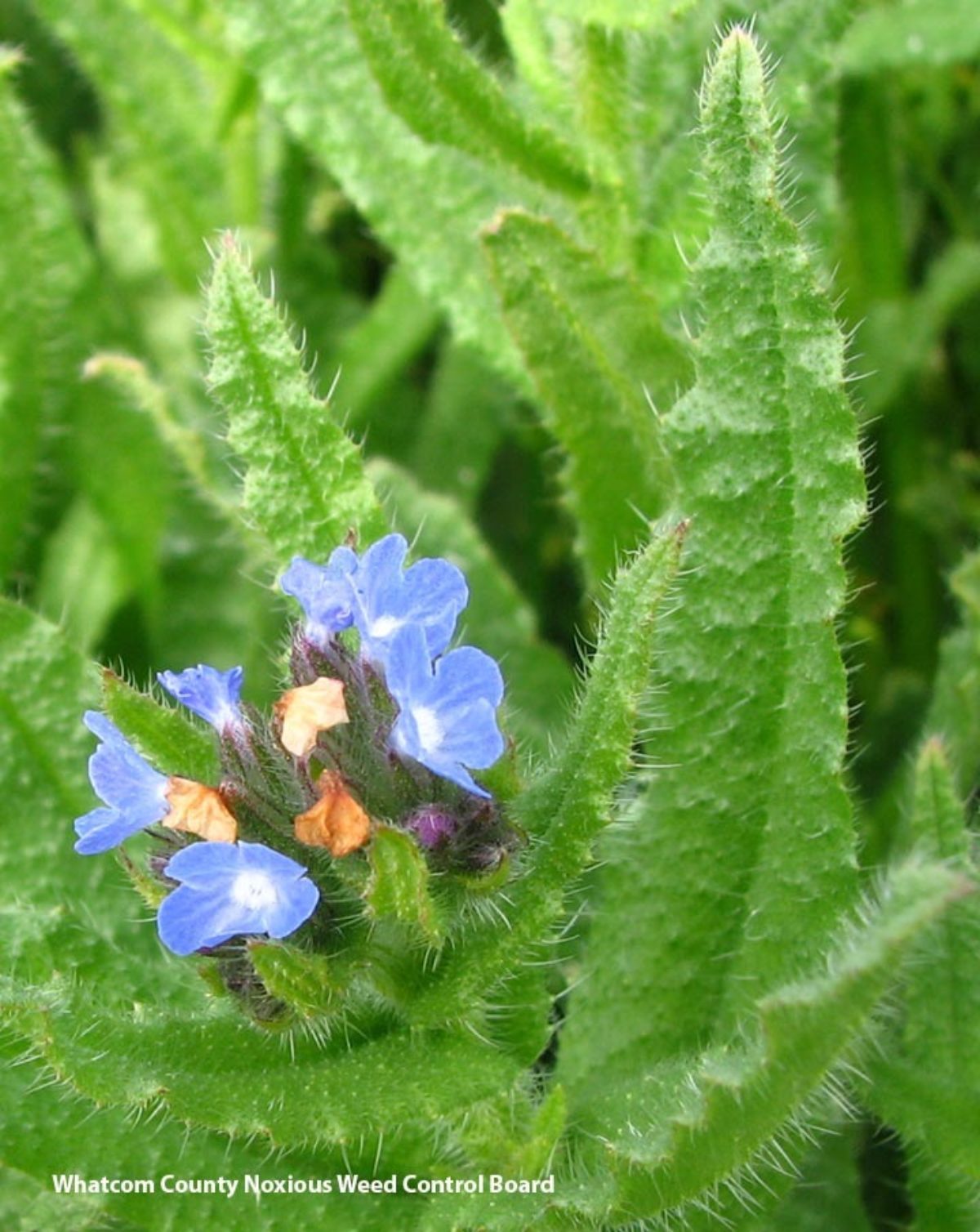
Family: Boraginaceae
Other Scientific Names:
Anchusa arvensis
Other Common Names: small bugloss
Weed class: B
Year Listed: 1991
Native to: Europe
Is this Weed Toxic?:
humans, livestock
Legal listings:
This plant is also on the Washington State quarantine list. It is prohibited to transport, buy, sell, offer for sale, or distribute plants or plant parts of quarantined species into or within the state of Washington or to sell, offer for sale, or distribute seed packets of seed, flower seed blends, or wildflower mixes of quarantined species into or within the state of Washington. Please see WAC 16-752 for more information on the quarantine list. For questions about the quarantine list, contact the Washington State Department of Agriculture's Plant Services Program at (360) 902-1874 or email PlantServices@agr.wa.gov.
Why Is It a Noxious Weed?
It can be a serious pest in cropland, particularly small grains. High weed densities can reduce yields in lentils and peas.
How would I identify it?
General Description
Annual bugloss is a leafy, annual herb that is covered in coarse hairs that have swollen bases. Plants typically reach 1 foot in height but can grow taller.
Flower Description
The flowers are arranged in spiral, often branching clusters at the tips of stems that straighten as they mature. Flowers are funnel-formed, have 5 sky-blue petals that fuse to form a bent tube.
Leaf description
The leaves are alternate, slender, lance-shaped and have wavy margins. Leaves are covered in coarse hairs that have swollen bases. They reduce in size going up the stem.
Stem description
Stems typically reach 1 foot tall but may grow up to almost 3 feet tall.
Fruit Seed Description
Each flower produces four nutlets, with each nutlet containing one seed.
Where does it grow?
Annual bugloss is found along roadsides, disturbed habitats, pastures and cultivated fields. Please click here to see a county level distribution map of annual bugloss in Washington.
How Does it Reproduce?
Annual bugloss reproduces by seed. About 250 seeds are produced per plant. 90% of seeds buried 6 deep are viable after three years and 2% remain viable after five years.
How Do I Control It?
General Control Strategy
Annual bugloss should be prevented from producing seed. Small infestations are easily pulled or dug.
Mechanical Control
Small infestations of annual bugloss are easily pulled or dug up.
Herbicide Control
Please refer to the PNW Weed Management Handbook, or contact your county noxious weed coordinator.
For More Information
See our Written Findings for more information about annual bugloss (Anchusa arvensis).
Pierce County NWCB Fact Sheet on annual bugloss
Stevens County NWCB Fact Sheet on annual bugloss
Thurston County NWCB Fact Sheet on annual bugloss



